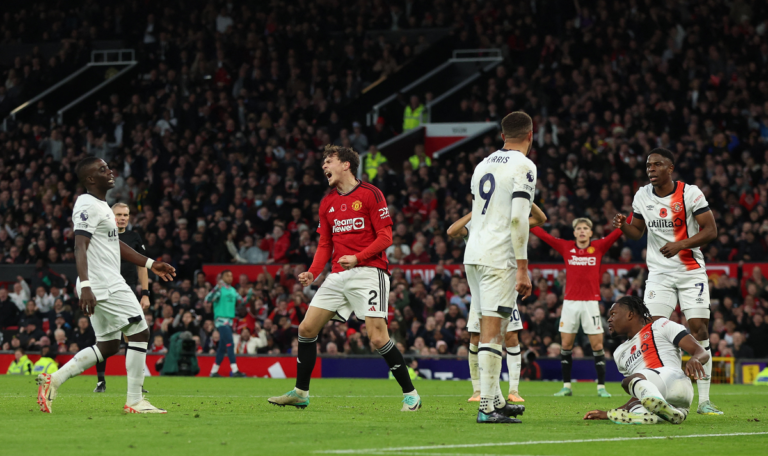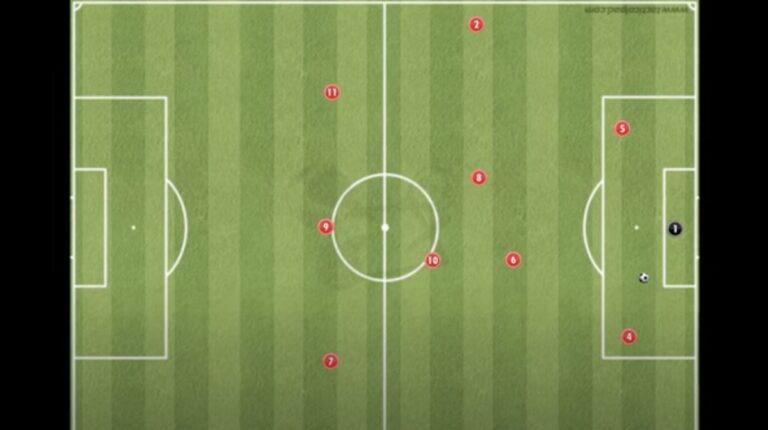What is a Wingback in soccer?
The wingback role in soccer may appear to some to be a relatively new position in the game. However, this is not enitrely correct for a bit like the sweeper role it is one that was invented and developed by the better players in soccer from its very existence in order to gain an early advantage over the opposition. After all if you are ahead of the opposing team in how you attack them then you are ahead of the game!
The wingback position similarly to the sweeper position cannot be attributed with having been invented solely by one individual player. Indeed it is most likely this role was actually the by-product of prodigiously talented ‘fullbacks’ who decided they would defend when they needed to but would join in the attack when they could. Things would then naturally evolve from there; a ‘fullback’ for example would call to one of his fellow players that he would be going forward in order to ‘cover’ in for his position whilst he did so, so the team would not be exposed. Some managers and coaches alike seeing this and its potential would have then encouraged fullbacks with the ‘engine’ and ability to do so to get up and down the flanks on the pitch as often as they could. In essence they were your early version of your ‘box to box’ midfielder but on the flanks or as now is commonly known – a wingback.
To illustrate one of the earliest and best exponents of how a wingback operates we’re going to take a look at a soccer player who was simply referred to as an attacking fullback at the time. Captain of Brazil 1970 and one of the finest fullbacks ever to play the game, Carlos Alberto Torres was more commonly known as just Carlos Alberto and probably the player who did most to herald the potential of the wingback position. Indeed he exemplified how a defender could be a defender yet still also embody the role of a devastatingly attacking player. Before we look at him in more detail and other early exponents of the wingback position let’s first understand by comparison the definition of both a fullback and wingback.
Fullback and Wingback – basic definitions and differences:
Fullback.
A traditional fullback in soccer is situated to the right or left side of the central defenders in a standard formation. To get a better understanding of this check out my previous article https://soccerballworld.com/soccer-numbers-positions/ and in particular numbers 2 and 3. A standard fullback’s job is simply to play his role in being part of a solid defensive line. He is not charged with any offensive duties and his main job is usually to neutralize the left or right wingers from the opposing team, numbers 7 and 11.
Examples of great players who did this job, and this job only were Gary Neville at right back for Manchester United and Paolo Maldini at left back for AC Milan. Though both were actually so good at their specific job they were also used at times as ‘cover’ center backs though they were never ever used as wingbacks. The reason; a true fullback basically only operates in their purist form when a four man defense is in operation, which was a formation and era both these players were a part of.
Wingback.
The wingback is a totally different soccer player and more associated with modern soccer and modern soccer formations than traditional ones. Again take a look at the following article https://soccerballworld.com/soccer-formations-and-tactics/ for it will help you understand why wingbacks are best and usually employed in the 3-5-2 formation.
If you look at https://soccerballworld.com/soccer-formations-and-tactics/#Three_Five_Two in particular, their job as I state is to get up and down the touchline in order to get crosses into the box for their strikers to get on the end of and also to get back and prevent opposition wingers doing the same should their side lose possession.
Ok so now we understand the fundamental differences between the defensive two terms or positions we can start to chart how the wingback has evolved from fullbacks into one of the most effective and utilized positions in modern soccer.
Wingback how did it evolve into such a key position?
To understand this, it is necessary to re-reference the aforementioned Captain of Brazil, Carlos Alberto and in particular one of the most beautiful goals ever scored. For this player, goal, and nation has without doubt had more input on the influence of the evolution of the wingback than any other. The Brazilians were the first to understand that if you had the players and the position was utilized correctly ‘it was the way forward’ – so to speak!
Take a look at the following video
As you can see Carlos Alberto in 1970 as a traditional fullback, really has no right what so ever to pop up in Italy’s penalty area to score a goal that any right winger in world soccer would be proud of. And in essence here-in laid the origin and future of the wingback.
Brazil’s role in the development of the modern wingback.
No other nation can have said to have been more influential in the development of the wingback than Brazil. First there was Carlos Alberto, but next came Cafu who has been described as the most complete right back ever. Just take a look:
Some may argue Cafu was already effectively a wingback in that he more than fulfilled the role of a wingback by definition. However whilst this is true, AC Milan during the 90’s did not change the shape or formation of their team to incorporate wingbacks per se. Indeed, Paolo Maldini remained at left back and primarily functioned as just that – a solidly defensive fullback. So there were no tandem wingbacks.
With Brazil it was a slightly different matter as firstly Leonardo came along in 1994 on the left side of the team. A player of some ability to say the least, Leonardo who initially kept a young Roberto Carlos out of the team and later played number 10 for Brazil was the gifted foil to Cafu on the other side of the pitch that saw a balanced Brazilian side attack down both flanks and ultimately win the World Cup in 1994. Attacking fullbacks they still were, but the potential of a fullback who also operated as a left or right midfielder or even as a partial winger was in fruition.
The first player who truly epitomized the term wingback however came afterwards and again was Brazilian – Roberto Carlos. A left sided player, Carlos literally bombed up and down the left side of the pitch for club and country like no player had before. At club level amongst other, Roberto Carlos who joined Real Madrid from Inter Milan in 1996 spent 11 highly successful seasons, played 584 matches in all competitions and scored 71 goals! His development of the left back role into wingback owed much to his predecessors – but even today if you ask a fan to name the best wingback of all time don’t be surprised if they say Roberto Carlos. Why? Well Roberto Carlos will forever be remembered and associated with this goal:
But his contribution and perfect illustration of how a wingback operates is best summarised by this video
The modern traditional wingback.
After Roberto Carlos’ announced himself on to the scene in the mid to late 1990’s, the role of the wingback developed dramatically as managers and coaches alike realized its potential. Essentially a mixture of a fullback and a winger, players tasked with the role had to be extremely physically fit, and possess great stamina and strength such was/is the amount of ground they have to cover. The reason a wingback is not only charged with getting forward as much as possible to assist the attack but is also expected to get back to help out the defense whilst operate and assist in midfield where they can.
The wingback, different managers and different applications.
Different sides and their successful managers have employed the wingback role in a whole host of different attacking and defensive ways. Managers such as Antonio Conte for example have had success employing it in a 3-4-3 formation at different clubs. Whilst Carlo Ancelotti has similarly favored wingbacks as a part of a 4-3-2-1 system. Master tactician Jose Mourinho conversely has used what was initially conceived as a primarily attacking format defensively to great effect across a whole range of different systems and teams he has managed – with his wingbacks more intent on stabilizing the defense and controlling midfield.
Primarily, wingbacks however have often been most effectively used as part of a 3-5-2 side and as a counter (if there is one) to the fantastic tiki-taka football played by Pep Guardiola’s Barcelona and the Spanish National side of circa 2010.
More recently Gareth Southgate used wingbacks to great effect in England’s run to the Euro 2021 Final.
Where are we then with wingbacks currently?
Well football is a game that continues to evolve and the role of the wingback under coaches like Jurgen Klopp and Pep Guardiola has been taken a step further. Klopp at LFC through Trent Alexander Arnold and Andy Robertson plays them as part of only a four man defense. An incredibly energy exerting role they are known as the ‘bombing wingbacks’ who are so essential to Liverpool’s free flowing attacks. Pep at Manchester City, conversely has innovated yet again and has started playing ‘inverted’ wingbacks. See the following article for an explanation of how this brilliantly unique system works.
Ultimately therefore the wingback in soccer is largely reliant on the mother of all invention – necessity. Because for the finest coaches the utmost necessity is to be as successful as possible. Where soccer next progresses and if the wingback continues to play a role in that progression is thereby dependent on that; whether and how successful the role of the wingback continues to be.







